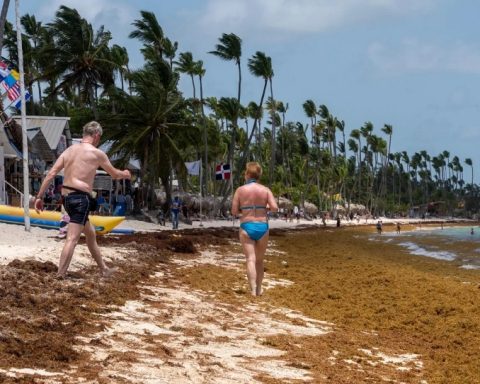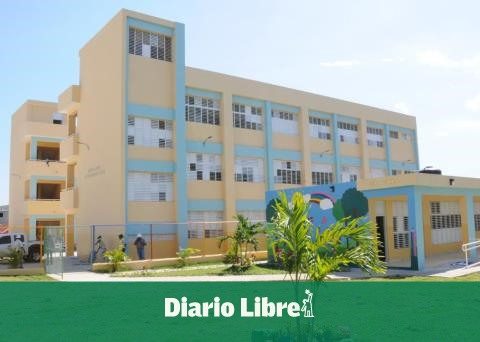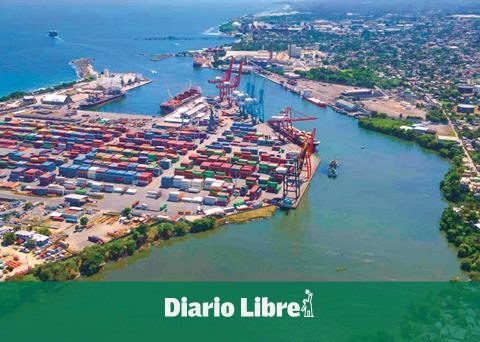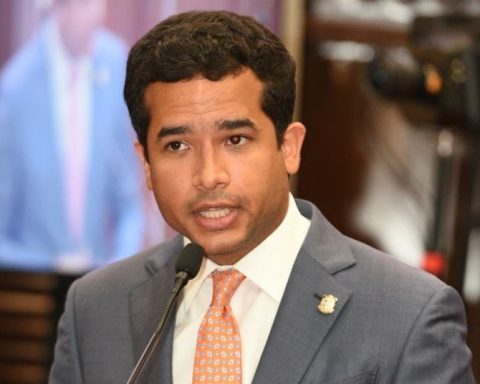SANTO DOMINGO.- The Dominican Medical College (CMD) received a study from various community organizations conducted by the World Environmental Law Alliance, which revealed how thermal, air, noise and vibration pollution from the two power generation barges owned by Seaboard Transcontinental located on the Ozama River affect the health of the inhabitants of the area and they asked this entity to be part of the investigation and studies that the Ministry of Public Health will carry out to establish the magnitude of the serious damage to health that these plants generate.
The organizations made the request to the Dominican Medical College in its capacity as guarantor of compliance with Law 42-01 on health, Law 63-03 that establishes that entity in its article 2, as well as article 159 paragraph II letter i , 179, of Law 87-01 on social security and its amendments.
The entities that made the request were: the Community Action Program for the Environment (PACMA); the Environmental Commission of Hope for Ozama; the National Network of Resistance and for the Remediation of Environmental Damage; the Institute of Lawyers for the Protection of the Environment (INSAPROMA); the Central of Unified Workers (CTU) and the National Committee for the Fight Against Climate Change.
They were received by the president, vice president and general secretary of the Dominican Medical Association, doctors Rufino Senén Caba, Justo José Nicasio and Francisca Moronta, respectively.
The president of the CMD, Senén Caba stated that this entity feels honored and honored to receive this request and “you can be sure that we will accompany you. The commitment to exercising and caring for the environment is one of the most laudable responsibilities that a citizen can have. There are medicines of the so-called morbigenetic triangle of Debi where the environmental impact on health is one of the most important determinants. You can be sure that we are going to assume and demand that it be carried out”.
Senén Caba stated that we are currently witnessing the exercise of truly irresponsible practices, inhumane in terms of damage to the environment and added that “the Ozama River has practically become a sewer where all the sewage and where everyone who wants to put an irresponsible business like this one of the barges has deteriorated it, they have completely deteriorated the basin of this river”.
According to the study prepared by scientist Rye Howars, from the Environmental Law Alliance Worldwide (ELAW), the Estrella del Mar II and Estrella del Mar III electric generators, located on the Ozama River, produce damage to health such as respiratory diseases in children and the elderly, hearing diseases due to noise and vibrations, and cardiovascular diseases to residents of neighboring sectors such as Calero, Pueblo Nuevo and Maquiteria in Villa Duarte, and Los Guandules, Las Cañitas, La New Barquita and the Colonial City.
The aforementioned report establishes the presence of air pollutants in the area where the barges operate, such as nitrogen oxides, whose exposure to NO2, which is the main one, causes irritation of the respiratory tract, bronchoconstriction and difficulty breathing, attacks of asthma and increases the risk of respiratory infections.
Said report also mentions that sulfur oxide emissions form polluting particles that alter the development of lung function in children and contribute to the deterioration of lung function in adults; and in addition, it causes and aggravates asthma and cardiovascular diseases.
“This study reveals that these plants are polluting 15 times more or above what the standards stipulate for a generator of this same capacity. And they are causing asthma, heart disease, skin disease and insomnia, nerve disease from vibrations. Due to the prolonged time of the 32-year-old plants, it is necessary to examine the victims in the area”, they stated.
Regarding noise and vibration, the deposited document cites that “the presence of significant noise and vibration pollution is a source of discomfort and possibly a source of serious health problems for neighboring communities.”
The study notes: “High noise levels can cause hearing loss, especially over prolonged periods. However, beyond hearing loss, prolonged exposure to even moderate noise levels causes a wide range of problems, from disrupted sleep to impaired cognitive performance in children and cardiovascular disease.”
For these reasons the report concludes that: “Electric barges operating under marine standards for environmental impacts are not suitable for placement in dense communities like Santo Domingo for extended periods.” Another of the report’s conclusions is that HFO (full oil), the dirtiest of petroleum-derived fuels, must cease completely.
This coalition of non-governmental organizations (NGOs) previously filed an application with the Ministry of Public Health requesting that an exhaustive medical investigation be carried out to establish the magnitude of the serious damage to health caused by these power generation barges owned by Seaboard Transcontinental. located on the Ozama River. They required the intervention of the Ministry of Public Health as the governing body in terms of collective health in our country.
Various personalities of national life such as environmentalists and experts in energy matters have expressed themselves in favor of these plants being transferred to another place due to their high level of contamination.
The institution responsible for the cited study is the Environmental Law Alliance Worldwide (ELAW), which helps communities speak out about clean air, clean water and a healthier planet. It is a global alliance of lawyers, scientists, and other advocates, collaborating across borders to advance grassroots efforts to build a just and sustainable future.


















